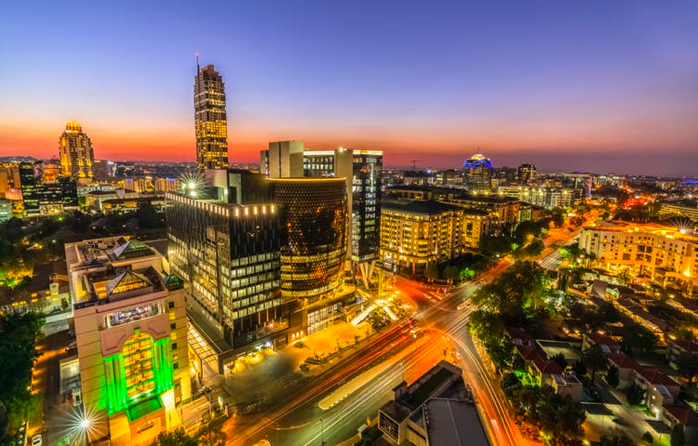Open-Ed
An interesting study identifying buildings as a primary starting point in delivering greenhouse gas emissions reductions went largely under the radar this past year. The objective of the study conducted by Naseema Elias and Tirusha Thambiran from the University of KwaZulu-Natal, Durban, South Africa, was to provide an assessment of the costs in achieving the emissions-reduction potential for each high-emitting sector in the eThekwini Municipality (KwaZulu-Natal, South Africa), through the determination of a marginal abatement cost curve (MACC).
They found that in Kwazulu Natal, the building sector will deliver the highest GHG reductions at the lowest costs in the eThekwini Municipality, but only through energy-efficiency measures. Not only is the building sector a low-cost and high-potential sector, but it also serves as a scaled approach to address a wide variety of sustainability issues such as water conservation and waste management. It is therefore recommended that the building sector be prioritised in the list of actions needed to address climate change.
Link to the full paper HERE
Despite the findings and course of action outlined by the study, South Africa’s building sector (public and private) remains largely ‘captured’ and ‘cosmetic’ when it comes to energy efficiency and performance reporting, in my opinion.
After initiating and gazetting the mandatory display of energy performance certificates in December 2020 for privately owned buildings larger than 2,000 square metres and 1,000 square metres for state-owned buildings, South Africa’s Minister of Mineral Resources and Energy, Mr Gwede Mantashe, doubled down and granted a three-year extension in November 2022.
Accounting Officers and building owners were required to display and submit EPCs by 7 December 2022, or risk a fine of R5 million, five years imprisonment or both. The move was designed to get owners of office blocks, entertainment facilities, educational institution buildings and places of assembly such as sporting facilities and community centres to reduce their energy use plus report their energy use for government recording and monitoring.
While it is common knowledge that the public sector buildings are increasingly uncompliant in South Africa due to neglect, mismanagement and corruption, the private sector building owners, led by the large listed property entities, are reluctant to be exposed as one of the country’s heavy carbon emitters. They largely ignored the energy reporting directive from the energy minister.
Only 450 certificates had been issued by November 2022, a fraction out of 250,000 to 350,000 buildings that still need to ensure they are compliant.
Taking a deeper dive into the private building sector one soon realises that the larger listed property companies are collectively dictating the direction and speed of building performance transformation in South Africa through collusion among themselves and ‘captured’ ownership of the Green Building Council South Africa (GBCSA).
According to the Global Alliance for Buildings and Construction, the buildings and construction sector accounts for nearly 40 per cent of total energy-related CO2 emissions and 36 per cent of final energy use worldwide. A growing population, as well as rapid growth in purchasing power in emerging economies and developing countries like South Africa, means that energy demand in buildings could increase by 50% by 2050.
The GBCSA, a non-profit organisation, is largely relied upon to provide direction on a net zero building sector in South Africa through a set of building rating tools. Unfortunately, their direction has been misleading by their inability to transition out of features-based outcomes originally copied from the Australian Green Building Council (AGBC). GBCSA pays AGBA a licence to use the Green Star Rating system. This licence is 10% on any accredited green star-rated project.
They argue that the more ‘green’ features a building has, the lower the carbon emissions however there is no proof in this theory. The result is that property developers either get the minimum green star rating and market their building as ‘green’ or they include as many green features as possible, regardless of performance, to obtain the highest green star rating. It is greenwashing on a grand scale.
Not one or a collection of green-star-rated buildings in South Africa has been independently audited in terms of ‘in use’ building performance to determine performance outcomes and comparisons. Understandably there is a decline in these ‘cosmetic’ models globally. Read more
It is no surprise that GBCSA is majority funded and housed by the large listed property entities in South Africa plus the building industry supply chain. Currently, there is no ‘as-built’ performance monitoring or public reporting. There are also no consequences if the intended performance does not meet the actual performance in their rating tool model.
The GBCSA board is largely made up of individuals drawn from the building industry who have a vested interest in driving their company-specific or individual agendas. There are no prominent high-performance building warriors appointed to the GBCSA board to keep them honest. As a result the GBCSA currently lacks the independence and impartiality of making any constructive impact on the sector let alone provide the correct direction.
Related news: Green Building Council – Green Warriors or Green Puppets?
South African architects, urban planners, engineers, designers and property developers also need to take responsibility for delivering carbon emissions-free buildings in South Africa. Buildings are capable of producing their energy through renewable sources including hydrogen. Read more
Related news: The green building is dead, long live the high-performance building
Globally, the ‘green building movement’ has been replaced by the ‘high-performance building movement’ where real-time reporting on carbon emissions, water and energy use plus indoor air quality is the new norm. Net-zero buildings are rising up all over the world.
South Africa is in a spiralling energy crisis, rotational load shedding of upr to 6 hours a day is getting worse and the cost to the economy is a massive R950 million a day.
In the face of the country’s energy crisis and the anticipation of increasing ESG reporting regulation, there is a simply solution to the problem. The GBCSA needs to be accountable and take the lead. Make real time energy performance reporting mandatory for any green star accredition through the GBCSA. Replace the marketing of ‘green features’ and the number of ‘green stars’ with the proud marketing of real-time carbon emissions count, water and energy use, indoor air quality and the ‘in use’ experience for tenants.
Author: Bryan Groenendaal
Disclaimer: The articles and videos expressed in this publication are those of the authors. They do not purport to reflect the opinions or views of Green Building Africa, our staff or our advertisers. The designations employed in this publication and the presentation of material therein do not imply the expression of any opinion whatsoever on the part Green Building Africa concerning the legal status of any country, area or territory or of its authorities.











